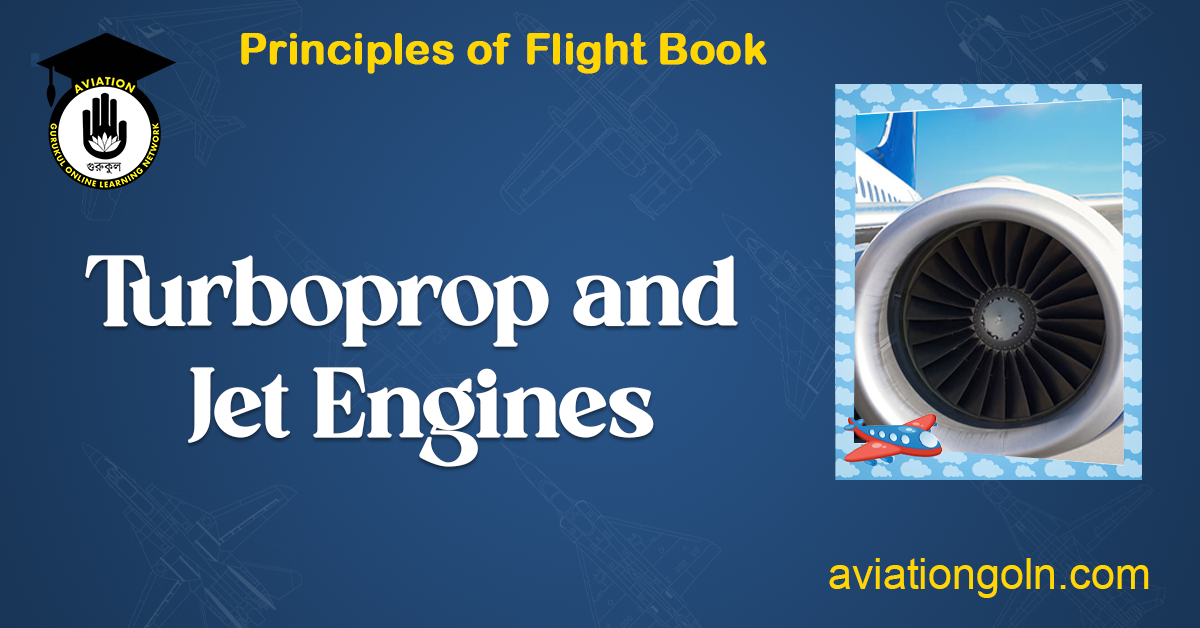Aircraft propulsion systems are the heart of any aircraft, providing the thrust needed for takeoff, cruising, and landing. Two prominent types of propulsion systems are turboprop and jet engines. While they share fundamental similarities due to their reliance on turbine machinery, the methods by which they produce thrust and their ideal applications differ significantly.

In this discussion, we will delve deep into the intricate workings of both turboprop and jet engines, examining their principles of operation, advantages, drawbacks, and appropriate applications.
1. Turboprop Engines
1.1. Basic Principle and Structure
Turboprop engines combine the characteristics of both jet and propeller-driven engines. At their core, they possess a gas turbine engine. However, instead of using all the exhaust gases to produce jet thrust, a significant portion of the energy is harnessed to drive a propeller.
The primary components of a turboprop engine include:
- Gas Generator: This is the core jet engine, consisting of the compressor, combustion chamber, and turbine. It generates high-velocity exhaust gases.
- Reduction Gearbox: Since the turbine rotates at extremely high RPMs, a gearbox is needed to reduce the rotational speed to a level suitable for the propeller.
- Propeller: Attached to the gearbox, it uses the power generated by the gas generator to produce thrust.
1.2. Advantages of Turboprop Engines
- Fuel Efficiency: At lower speeds (below 450 mph), turboprops are more fuel-efficient than pure jet engines.
- Short Takeoff and Landing: The propeller provides a high level of thrust at low speeds, ideal for short runways.
- Versatility: Suitable for a variety of operations, from regional passenger flights to cargo and military missions.
1.3. Disadvantages
- Speed Limitation: Turboprops are generally slower than jets. They’re most efficient at speeds below 450 mph.
- Noise: The propellers generate more noise compared to jet engines.
1.4. Applications
Due to their versatility and efficiency at lower speeds, turboprop engines are common in:
- Regional Passenger Aircraft: For short to medium-haul flights.
- Cargo Aircraft: Especially in areas with shorter runways.
- Military Aircraft: Certain reconnaissance planes, trainers, and cargo planes.
2. Jet Engines
2.1. Basic Principle and Structure
Jet engines, also known as turbojet or turbofan engines (depending on the specific design), work on the principle of Newton’s third law of motion: for every action, there is an equal and opposite reaction. They ingest air, compress it, mix it with fuel, and then ignite the mixture. The hot gases produced expand and are expelled at high velocities from the rear of the engine, producing forward thrust.
Main components include:
- Intake: Where air enters the engine.
- Compressor: Compresses the incoming air, increasing its pressure.
- Combustion Chamber: Where fuel is introduced and ignited, creating high-temperature and high-pressure gases.
- Turbine: Extracts energy from the high-velocity gases to drive the compressor and other machinery.
- Exhaust Nozzle: Expels the exhaust gases at high speeds to produce thrust.
In a turbofan engine, there’s an additional large fan at the front, which helps in moving a greater volume of air around (bypassing) the core engine. This provides additional thrust and improves efficiency.
2.2. Advantages of Jet Engines
- High Speeds: Turbojets and turbofans can achieve much higher speeds than turboprops.
- Altitude Range: They can operate efficiently at higher altitudes, allowing aircraft to fly above weather systems and take advantage of jet streams.
- Smooth Operation: Generally, jet engines provide smoother flights, especially at high altitudes.
2.3. Disadvantages
- Fuel Consumption: At lower speeds, they are less fuel-efficient than turboprops.
- Longer Runways Needed: Jets generally require longer takeoff and landing distances compared to turboprops.
2.4. Applications
Jet engines are predominant in:
- Commercial Airliners: For medium to long-haul flights.
- Military Fighters and Bombers: Where high speeds and altitudes are essential.
- Business Jets: For corporate and VIP travel.
3. Technical Differences and Considerations
3.1. Speed and Altitude
Turboprops are most efficient at altitudes between 20,000 to 30,000 feet and speeds below 450 mph. Beyond these parameters, jet engines, especially turbofans, become more efficient, making them suitable for cruising altitudes above 30,000 feet and speeds closer to 600 mph.
3.2. Fuel Efficiency and Range
At their optimal speeds and altitudes, turboprops consume less fuel compared to jets. However, with the advancement in technology, especially in the design of high-bypass turbofan engines, the gap in fuel efficiency between the two has narrowed for many applications.
3.3. Noise and Vibration
Turboprop engines tend to produce more noise and vibration, primarily due to the propeller. Modern turbofan engines are quieter and offer a smoother ride, especially at higher altitudes.
3.4. Maintenance
While the core turbine machinery requires intricate maintenance in both engines, turboprops have added complexities due to their gearboxes and propellers. However, modern design and materials have significantly improved the reliability and service intervals of both engine types.
4. Conclusion
Both turboprop and jet engines have evolved tremendously since their inception, each finding its niche in the aviation world. The choice between them depends largely on the specific mission profile, be it a short-haul regional flight or a transcontinental journey.
Turboprops, with their versatility and efficiency at lower speeds, remain an integral part of regional aviation and specialized missions. On the other hand, jet engines, especially the turbofan variant, dominate the skies when it comes to long-haul commercial flights and high-speed military operations.
As technology continues to advance, it’s exciting to speculate how the next generation of aircraft propulsion will further shape the future of aviation. Whether through improvements in existing designs or entirely new propulsion concepts, the quest for faster, more efficient, and environmentally friendly engines will undoubtedly continue.
